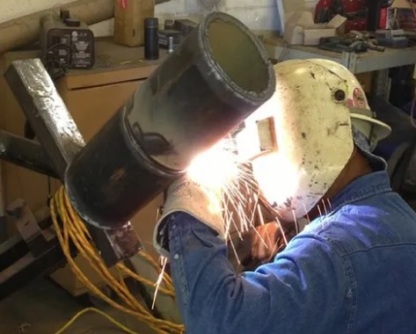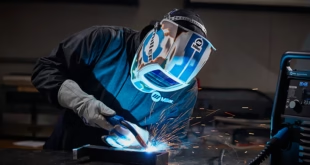Mastering the 6G Welding Position: Challenges, Techniques, and Advantages
Welding is a critical skill in various industries, from construction to manufacturing. The ability to weld proficiently in different positions is a hallmark of a skilled welder. Among the various welding positions, the 6G welding position stands out for its complexity and demands on skill. In this comprehensive guide, we delve into what the 6G welding position entails, the challenges it presents, techniques for success, training options, common mistakes to avoid, and the advantages of mastering this position.
Introduction to 6G Welding Position
Welding positions are standardized configurations that determine the orientation of the weld joint. They play a crucial role in influencing factors such as penetration, fusion, and overall weld quality. The 6G welding position, in particular, is renowned for its difficulty and is often used as a benchmark for welders’ proficiency.

Understanding Welding Positions
Definition and Significance
The 6G welding position refers to the orientation in which a pipe joint is welded, set at a 45-degree angle. In this position, welders are required to weld all the way around a pipe without changing its position, presenting a formidable test of skill and technique.
Significantly, mastering the 6G position is often seen as a badge of honor among welders. It signifies a high level of proficiency and adaptability, as welders must navigate the complexities of welding in various orientations, including overhead, vertical, and horizontal positions. The ability to execute quality welds in the 6G position is highly valued in industries such as construction, manufacturing, and oil and gas, where pipe welding plays a vital role in infrastructure and fabrication projects.
Types of Welding Positions
Welding positions are classified into various categories, each presenting unique challenges and requirements. These include flat (1F), horizontal (2F), vertical (3F), overhead (4F), horizontal-vertical (2G), vertical-up (3G), and overhead-vertical (4G) positions. Each position requires specific techniques and skills to achieve satisfactory results.
What is 6G Welding Position?
Definition
The 6G welding position refers to a combination of vertical and horizontal welding, where the pipe is positioned at a 45-degree angle. This position is commonly encountered in industries such as pipeline construction and shipbuilding, where welding on curved surfaces is prevalent.
Features
- Multi-axis Welding: The 6G position involves welding on a curved surface, requiring welders to maneuver around the pipe while maintaining a consistent weld bead.
- Advanced Spatial Awareness: Welders must possess exceptional spatial awareness and dexterity to navigate the complexities of the 6G position effectively.
- Real-world Application: Mastering the 6G position prepares welders for real-world welding scenarios where working on curved surfaces is common.
Challenges of Welding in 6G Position
Welding in the 6G position is renowned for its difficulty, primarily due to the array of challenges it presents to welders. Let’s delve into these challenges to gain a deeper understanding of what makes this welding position particularly demanding.
Complex Orientation and Angles
One of the primary challenges of the 6G welding position lies in its complex orientation and angles. Unlike flat or horizontal welding positions, the 6G position requires the welder to work on a pipe joint that is set at a 45-degree angle. This inclination introduces added complexity as welders must adjust their techniques to accommodate this angular orientation.
Welding in Multiple Directions
In the 6G position, welders are tasked with welding in multiple directions. This means they must be proficient in welding not only in the horizontal plane but also vertically and overhead. Transitioning between these different directions requires skillful manipulation of the welding torch and precise control of the weld pool.
Overhead, Vertical, and Horizontal Welds
Another challenge inherent in the 6G position is the need to perform overhead, vertical, and horizontal welds seamlessly. Each orientation presents its own set of difficulties, from managing gravity’s effects on molten metal in overhead welding to ensuring proper penetration and fusion in vertical and horizontal welds. Welders must be adept at adjusting their technique to meet the specific requirements of each orientation.
Limited Accessibility and Maneuverability
Furthermore, welders face limited accessibility and maneuverability when working in the 6G position. The nature of pipe welding often means that the weld joint is located in tight spaces or areas with restricted access. This can make it challenging for welders to position themselves comfortably and maneuver their welding equipment effectively, adding an additional layer of complexity to the welding process.
Techniques for Successful 6G Welding
Preparation
Thorough preparation is essential for success in the 6G position. This includes cleaning the pipe surface, selecting the appropriate welding technique, and ensuring proper fit-up and alignment. Proper preparation sets the foundation for a successful welding operation and helps prevent common issues such as lack of fusion and weld defects.
Execution
During welding, maintaining a stable arc, controlling heat input, and managing travel speed are crucial factors. Welders must maintain steady hand movements while adjusting torch angle and position to achieve uniform weld bead formation. Proper technique and execution ensure consistent weld quality and integrity in the 6G position.
Inspection
After welding, thorough inspection is essential to verify weld quality and integrity. Visual inspection, non-destructive testing (NDT), or X-ray examination may be employed to detect defects and ensure compliance with industry standards. Effective inspection practices help identify and address any issues promptly, preventing costly rework or failures.
Training and Certification for 6G Welding
Importance of Proper Training
Proper training is paramount for welders aspiring to master the 6G position. Comprehensive training programs provide theoretical knowledge and practical skills necessary for success in challenging welding environments. Hands-on training under the guidance of experienced instructors helps welders develop proficiency and confidence in the 6G position.
Certification Programs
Various organizations offer certification programs specifically tailored to 6G welding. These programs assess welders’ proficiency in the 6G position through practical tests and written examinations, validating their skills and qualifications. Achieving 6G certification demonstrates a welder’s competency and opens up opportunities for career advancement and higher wages.
Common Mistakes to Avoid in 6G Welding
Even seasoned welders can fall victim to common mistakes when tackling the challenging 6G welding position. Recognizing these pitfalls and knowing how to avoid them is crucial for achieving quality welds and ensuring project success.
Lack of Proper Joint Alignment
One of the most fundamental aspects of successful welding is proper joint alignment. In the 6G position, where the pipe is set at a 45-degree angle, ensuring precise alignment of the joint becomes even more critical. Failure to align the joint correctly can result in weld defects such as lack of fusion or incomplete penetration, compromising the integrity of the weld.
Inconsistent Arc Length and Travel Speed
Maintaining a consistent arc length and travel speed is essential for producing high-quality welds. Variations in arc length or travel speed can lead to uneven weld bead appearance, lack of fusion, or excessive heat input, all of which can compromise weld integrity. Welders must focus on maintaining uniformity in these parameters throughout the welding process.
Insufficient Penetration or Fusion
Achieving adequate penetration and fusion is paramount in welding, particularly in the 6G position where weld quality is crucial. Insufficient penetration or fusion can result in weak welds that are susceptible to defects and failure under load. Welders must ensure proper heat input and technique to promote thorough fusion between the base metals and the filler material.
Neglecting to Control Heat Input and Distortion
Controlling heat input and minimizing distortion are significant challenges in 6G welding, given the varied orientations and positions involved. Excessive heat input can lead to distortion of the pipe and adjacent materials, affecting fit-up and weld quality. Welders must employ techniques such as proper preheating, interpass temperature control, and tack welding to manage heat input and mitigate distortion effectively.
Advantages of Mastering 6G Welding
Career Opportunities
Proficiency in the 6G welding position opens up lucrative career opportunities for welders. Industries such as oil and gas, aerospace, and construction demand skilled welders capable of working in challenging environments. Welders with 6G certification are in high demand and command higher wages due to their specialized skill set.
Higher Pay
Due to the complexity and skill required, welders proficient in the 6G position often receive higher pay rates compared to those with less advanced certifications. Employers value the expertise and competency demonstrated by 6G-certified welders and are willing to compensate them accordingly.
Versatility
Mastering the 6G position enhances a welder’s versatility and adaptability in diverse welding environments. It demonstrates a high level of skill and competency, making welders valuable assets to employers. Welders proficient in the 6G position can tackle a wide range of welding tasks with confidence, contributing to improved productivity and efficiency.
FAQs
Is 6G welding the hardest position?
Yes, 6G welding is widely regarded as one of the most challenging welding positions due to its multi-axis nature and requirement for advanced skills.
How long does it take to learn 6G welding?
The time required to master 6G welding varies depending on the individual’s prior experience, dedication to practice, and quality of training received. It may take several months to years to achieve proficiency.
What is the pass rate for 6G welding certification tests?
Pass rates for 6G welding certification tests vary depending on the testing standards and criteria set by certifying bodies. Generally, the pass rate hovers around 50-70%.
Can I practice 6G welding at home?
While it’s possible to practice welding at home, mastering the 6G position often requires specialized equipment and proper safety measures. It’s advisable to seek professional training and practice under supervision.
Are there online courses available for 6G welding training?
Yes, there are online courses and instructional videos available for 6G welding training. However, hands-on practice under the guidance of experienced instructors is essential for developing proficiency.
Conclusion
Mastering the 6G welding position is a challenging yet rewarding endeavor for welders. It requires dedication, skill, and continuous learning to achieve proficiency. By understanding the challenges, employing proper techniques, and investing in training, welders can unlock lucrative career opportunities and become sought-after professionals in the welding industry.
 Welding of Welders All about Welding and Welders
Welding of Welders All about Welding and Welders



